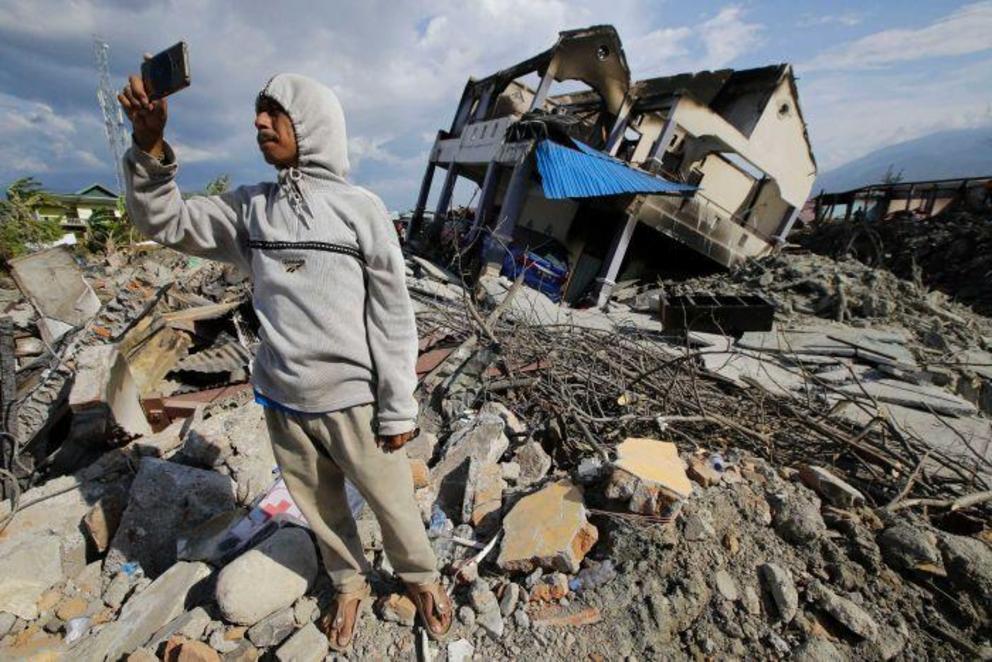Thousands killed as Indonesia devastated by nearly 2,000 natural disasters in 2018
Indonesians struggled through a tough year after battling tsunamis, earthquakes and wild storms.
The devastating tsunami that smashed through villages and beach resorts along Indonesia's Sunda Strait, which left at least 430 dead just days before Christmas, was the latest in what seems like an endless chain of extreme natural events to hit the country this year.
Key points:
- Indonesia lies within the Pacific Ring of Fire where 90 per cent of earthquakes occur
- The region is also susceptible to volcanic activity, tsunamis and landslides
- The largest tsunami in 2018 claimed over 2,000 lives on the island of Sulawesi
Throughout 2018, Indonesia's National Disaster Mitigation Agency (BNPB) recorded almost 2,000 natural disasters that claimed nearly 4,000 lives and displaced around 3 million people.
The natural events have also caused severe financial losses, which the agency estimates to be more than $2.9 million from just the Sulawesi tsunami and earthquake and Lombok events alone.
But even for Indonesia, which is located along the Pacific Ring of Fire, the level of destruction this year is surprising.
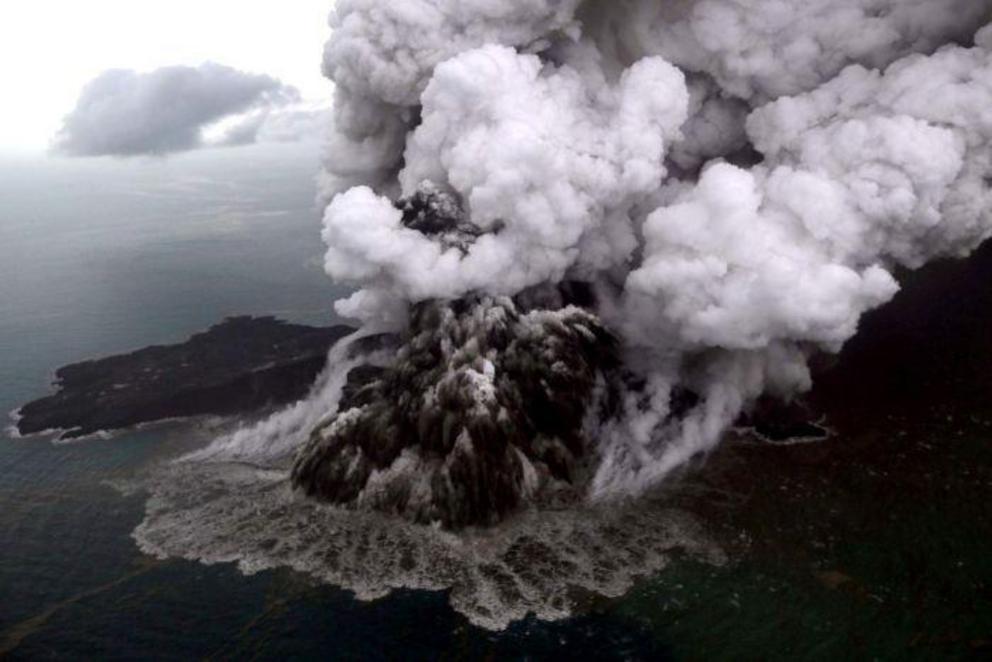 An undersea landslide on the Anak Krakatau volcano caused the tsunami.
An undersea landslide on the Anak Krakatau volcano caused the tsunami.
Rahmat Triyono, head of the earthquake and tsunami centre at the Indonesian meteorology and geophysics agency (BMKG), told the ABC this year was "particularly devastating".
Mr Triyono denied the higher number of casualties were related to warning system failures, and instead attributed it to stronger earthquakes compared to previous years.
And while there had been efforts to improve the tsunami warning system in Indonesia since the Aceh event in 2004, Professor Greg Foliente, deputy director of the Centre for Disaster Management and Public Safety (CDMPS) at Melbourne University, said the areas needing to be covered are too vast.
 Indonesian authorities are battling debris and difficult weather to search for bodies.
Indonesian authorities are battling debris and difficult weather to search for bodies.
"[Indonesia] is a very large, spread-out and diverse country that is exposed to multiple natural hazards across its more than 17,000 islands," Professor Foliente told the ABC.
"Many of the vulnerable areas are heavily populated — some places even have increasing population — so their overall exposure to natural disasters is probably the same as 10 years ago."
To get an idea of the scale of the damage this year, we looked at five of the most severe natural disasters in Indonesia.
1. Sunda Strait tsunami, December 24
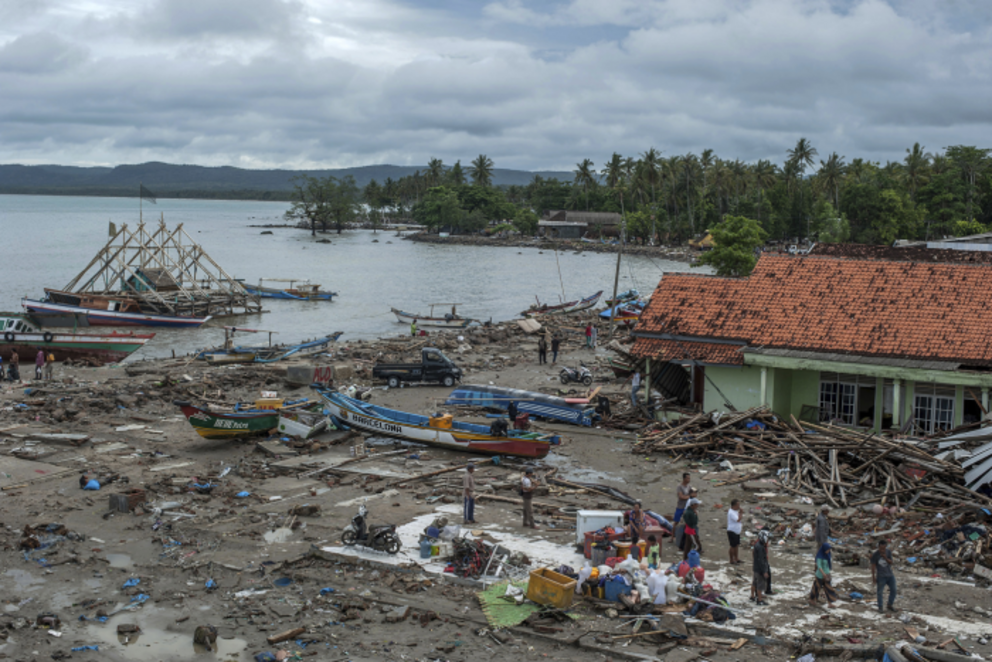 Coastal villages were the hardest hit as the wave came without warning.
Coastal villages were the hardest hit as the wave came without warning.
Search and rescue teams are still hunting for survivors and recovering bodies in the wake of Indonesia's most recent tsunami that tore through the Sunda Strait, which runs between the islands of Java and Sumatra.
The tsunami was triggered by volcanic activity on the island of Anak Krakatoa, which caused an undersea landslide.
By Christmas Day, 429 had been confirmed dead, 1,485 injured and 154 remain missing.
About 20,000 more were displaced with BNPB recording damage to 883 houses, 73 hotels and villas, 60 shops and 434 boats.
Riefian Fajarsyah, lead vocalist for Indonesian pop group Seventeen, was the group's sole survivor after the tsunami hit unexpectedly as the band played at a beachside concert.
Space to play or pause, M to mute, left and right arrows to seek, up and down arrows for volume.
Footage posted on social media showed the stage suddenly being swept into the crowd mid-song.
The pop star's wife, an Indonesian actress and TV personality, was one of dozens of audience members killed.
2. Sulawesi earthquakes, September 28 — October 1
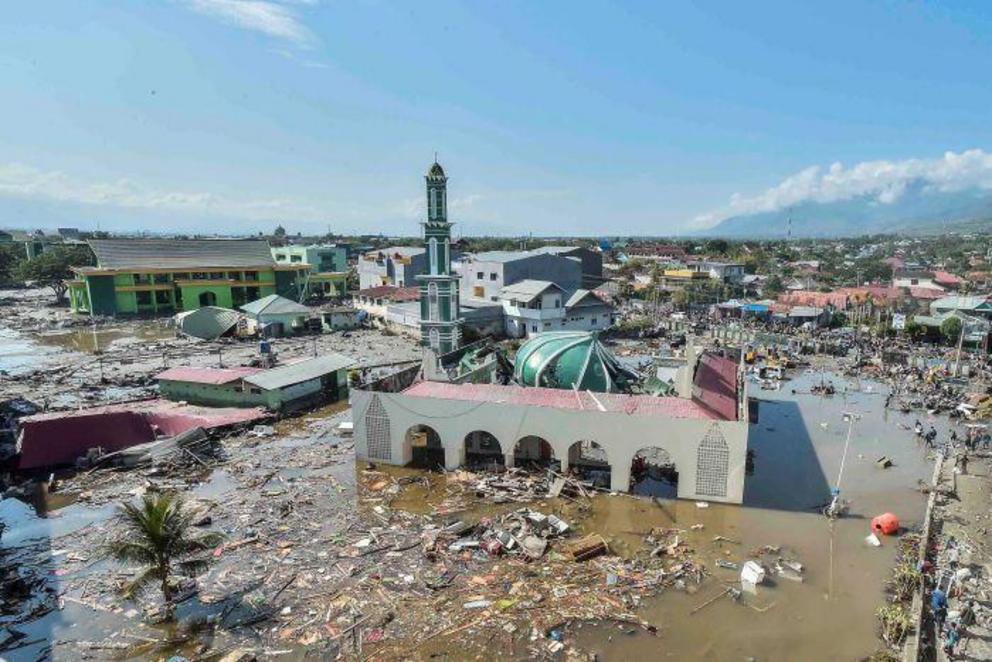 Many buildings, including this mosque in Palu, were destroyed by the tsunami.
Many buildings, including this mosque in Palu, were destroyed by the tsunami.
The official death toll from multiple earthquakes and an ensuing tsunami that hit Sulawesi between September 28 and October 1 stands at 2,073, but with around 5,000 still missing long after the search for survivors ended, the true number is likely to be much higher.
More than 10,000 people were injured and almost 90,000 displaced. The majority of fatalities occurred in the coastal town of Palu, which was hit by 7-metre waves.
Before and after satellite images revealed the extent of the damage with whole suburbs swallowed by mud and sludge.
The disaster drew worldwide attention with offers of aid and assistance pouring in from other parts of Indonesia and foreign countries.
After the event, the BMKG faced criticism with many questioning why the tsunami warning was lifted too soon.
Space to play or pause, M to mute, left and right arrows to seek, up and down arrows for volume.
The geophysical agency said there was no observation data at Palu, so they relied on the only data that they had and made a call based on that.
"If we had a tide gauge or proper data in Palu, of course, it would have been better. This is something we must evaluate for the future," Mr Triyono said.
However, he said the warning system is improving, as well as the speed and distribution of information.
3. Lombok earthquakes, July 29 — August 18
 Rescuers search for victims in Tanjung, Lombok.
Rescuers search for victims in Tanjung, Lombok.
A series of earthquakes began with a magnitude–6.4 earthquake which struck the northern part of Lombok, a popular Indonesian tourist destination, on 29 July 2018, killing 14 people and injuring hundreds.
The BNPB recorded more than 133 aftershocks following the early morning earthquake, including the magnitude-6.9 quake that struck on August 5 and could be felt in islands near Bali.
Nearly 300 people were killed in mainly North Lombok, including many crushed by collapsed houses, while thousands of properties were damaged and 150,000 people were left homeless.
Two weeks later, another quake struck Lombok, killing at least 10 people and causing others to rush out of buildings in panic.
Scientists say the powerful earthquakes have lifted Lombok by as much as 25 centimetres.
4. Landslides and flooding in Jakarta, February 22
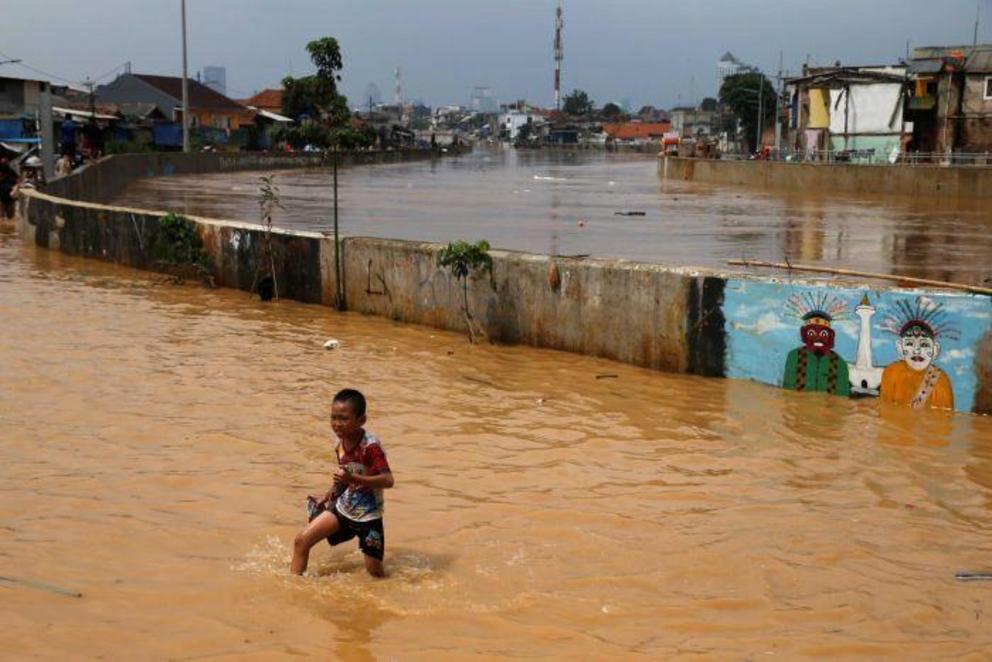 6,500 people had been displaced by floods.
6,500 people had been displaced by floods.
As West Java was still reeling from an earthquake that destroyed the homes of more than 8,000 families just weeks earlier, flooding and landslides hit nearby Central Java.
The wild weather forced 6,500 people to evacuate and caused massive destruction in the capital and surrounding areas.
Rescuers worked day and night to pull out survivors buried in the mud. Eleven bodies were recovered but seven remain missing.
5. Tornado in West Java, December 6
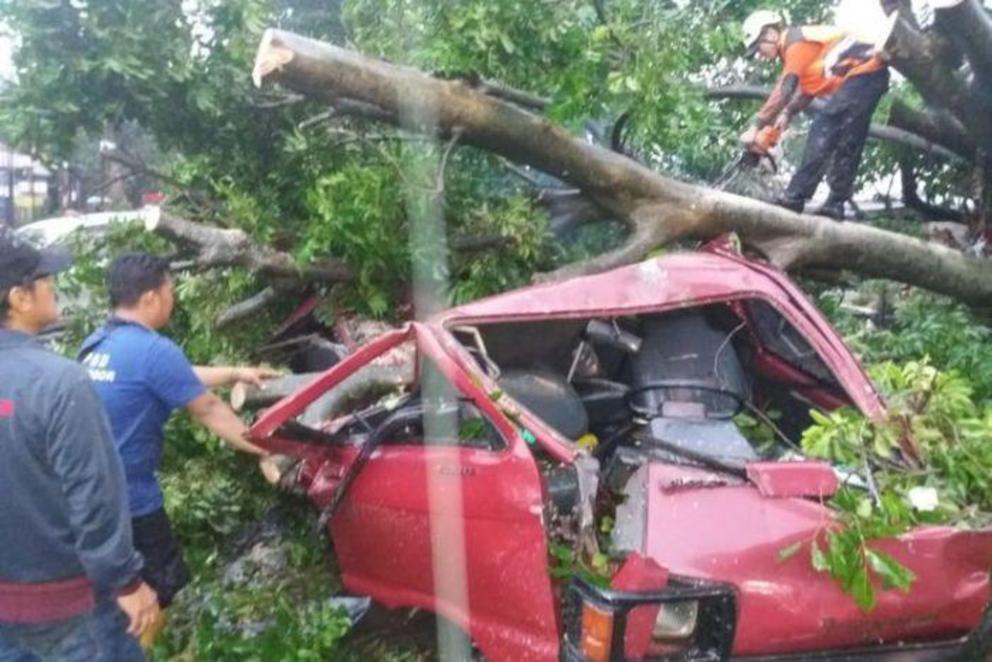 A tornado killed one person in Bogor, Indonesia's "city of rain".
A tornado killed one person in Bogor, Indonesia's "city of rain".
A tornado and heavy rain that hammered Bogor — dubbed Indonesia's "rain city" by locals — killed one person, injured three others and displaced more than 900 residents, according to BNBP.
Eni Retno, a 46-year-old woman who was driving to pick up her child, was killed after a big tree trunk fell onto her car.
According to BMKG, tornados are common during a transition from dry to rain season.
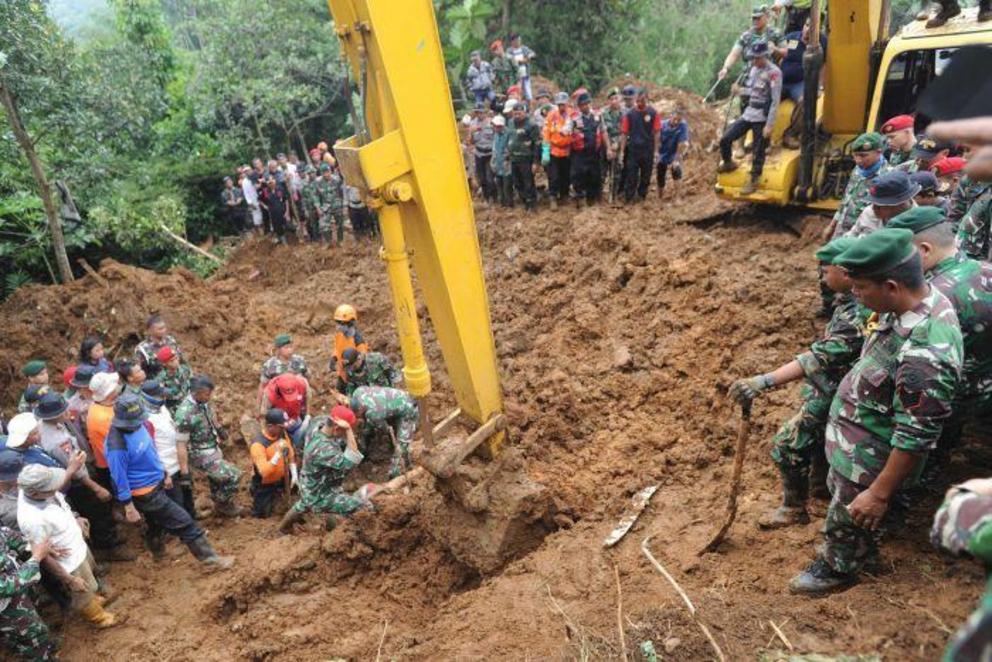 Rescuers pulled two women alive from a car trapped by a landslide for 13 hours. One later died in hospital.
Rescuers pulled two women alive from a car trapped by a landslide for 13 hours. One later died in hospital.
While Indonesia and the many countries around the Pacific Ring of Fire are subject to natural disasters like earthquakes, tsunamis and volcanic activities, experts say countries can be more prepared.
Professor Foliente said appropriate hazard maps for the natural disasters need to be kept up to date and early warning systems should be in place and in good working conditions.
"The general public and specific vulnerable communities need to be made aware of hazards and emergency procedures," he said.
"The authorities also need to collect all kinds of data to help researchers to improve knowledge and to inform policy and decision-making."
Indonesia's geophysical agency welcomed President Joko Widodo's decision to buy more sophisticated equipment to monitor natural disasters, especially for earthquakes and tsunamis.
"All stakeholders and government on the national and local levels should also work together to create a road map to identify what the vulnerable areas need, and not only rely on BMKG," Mr Triyono said.
Space to play or pause, M to mute, left and right arrows to seek, up and down arrows for volume.
Video can be accessed at source link below.

